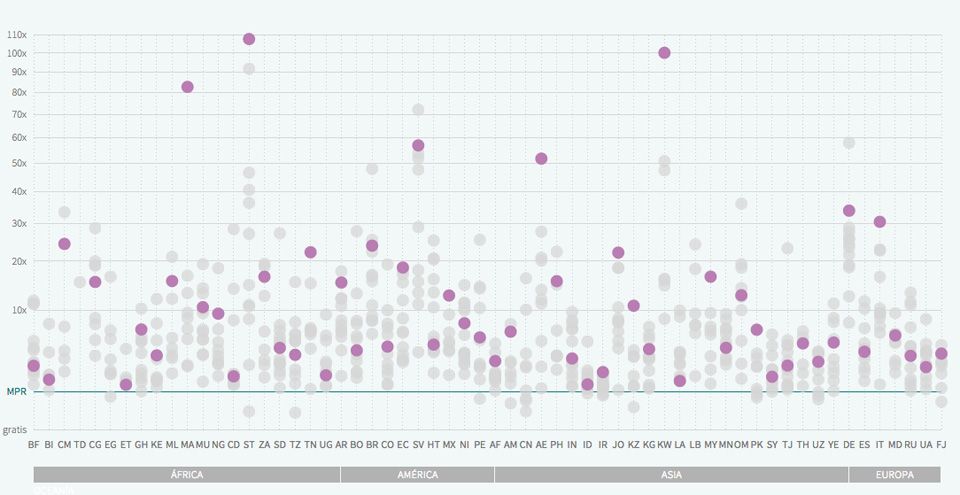Antidepressant used for anxiety, also useful against migraine and headache.
Penicillin-like antibiotic, widely used against bacterial infections.
Used to control high blood pressure or heart diseases like angina pectoris.
Used to treat high blood pressure and protect the heart after a heart attack.
Antibiotic commonly used against meningitis, pneumonia or gonorrhea.
Antibiotic used for pneumonia, urinary tract infections or sexually transmitted diseases.
An antibiotic used against certain bacterial infections, such as pneumonia or bronchitis.
Anxiolytic used to relieve anxiety, muscle spasms and seizures.
Anti-inflammatory and analgesic, is used against mild or chronic pain, such as arthritis.
This is one of the most commonly used hypoglycemic drugs against type 2 diabetes.
Gastric protector used to prevent damage to the digestive system by gastroesophageal reflux.
One of the most common analgesics, routinely used against cold or flu symptoms.
Inhaler, used for asthma or obstructive respiratory diseases such as COPD.
Used to reduce blood cholesterol levels.
times the reference pricedays of work
-
11 days' wages to buy an asthma inhaler
A citizen from Kyrgyzstan needs to work 11 days to buy an asthma inhaler (salbutamol) at a pharmacy, versus 48 minutes needed in Spain or 120 in Germany.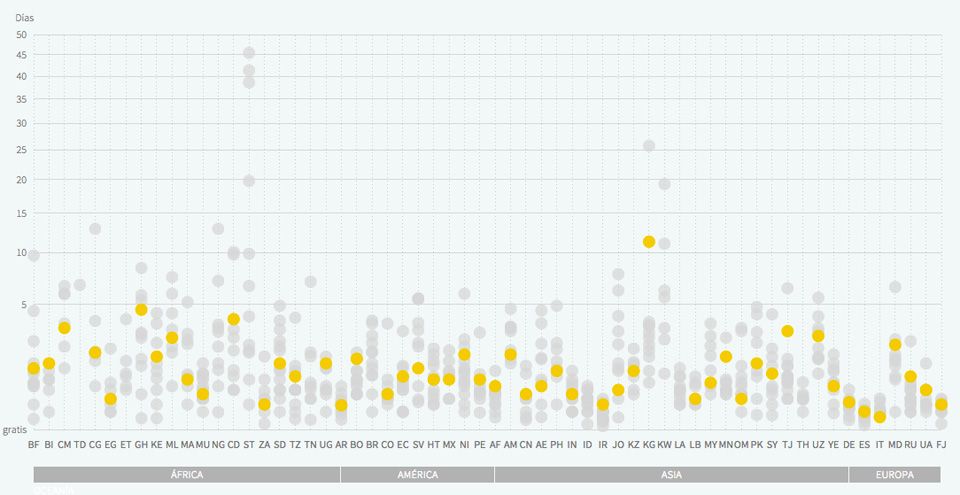
-
The daily salary of the lowest paid public servant
In order to calculate the number of working days needed to pay for treatment, we use an official figure: the daily salary of the lowest public servant in each country.
-
The most expensive, a cholesterol-lowering medication
Simvastatin, used to lower the level of cholesterol in the blood, is the least affordable drug: a patient needs almost five days of salary (4.67) on average, across 60 countries, to buy the complete treatment. On the other extreme, less than one hour of work is needed for diazepam, an anti-anxiety drug.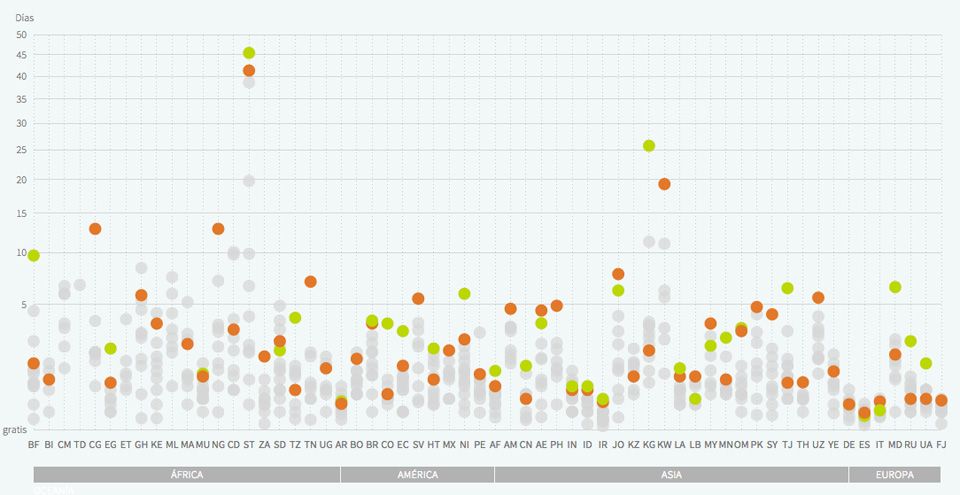
-
Where are medicines least affordable?
If you lived in São Tomé and Príncipe you'd need to work 14 days on average to pay for the treatment of one of the 14 drugs analysed. It's the country where medicines are least affordable. Kuwait follows (7 days). On the other hand, in Italy or Spain (less than one hour of work in both of them) or Germany (an hour and a half) these essential drugs are much more accessible.
-
Everything is relative: let's talk about prices
Another variable we can look at is prices. But not on absolute terms: what we analyse is the ratio between the cost of the medicine in each country and an international reference price (the green line). That allows us to compare data from studies at different points in time and visualise the outliers. If a data point goes up too much, we have a problem.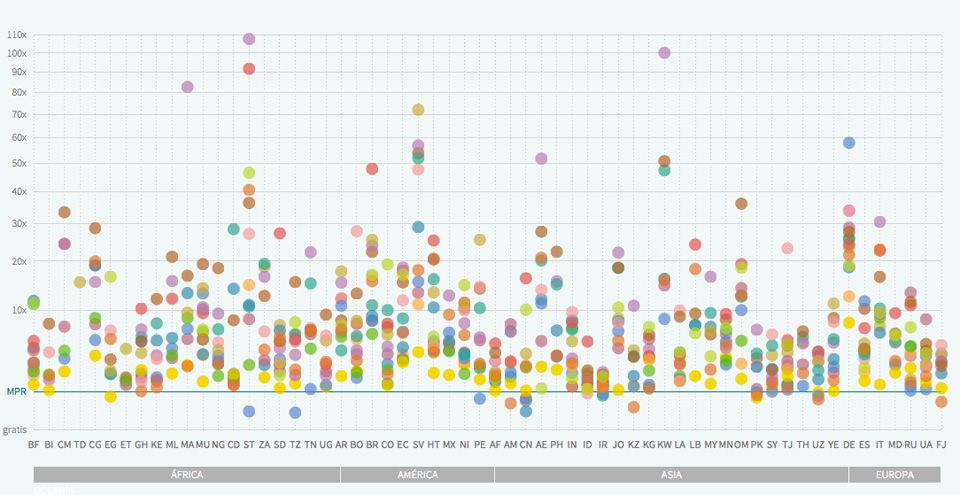
-
The prices in Kuwait, out of control
This Persian Gulf country showed the biggest deviation from the international reference price in a study in 2004. Ciprofloxacin, one of the most common antibiotics, was up to 100 times the reference price in Kuwait pharmacies.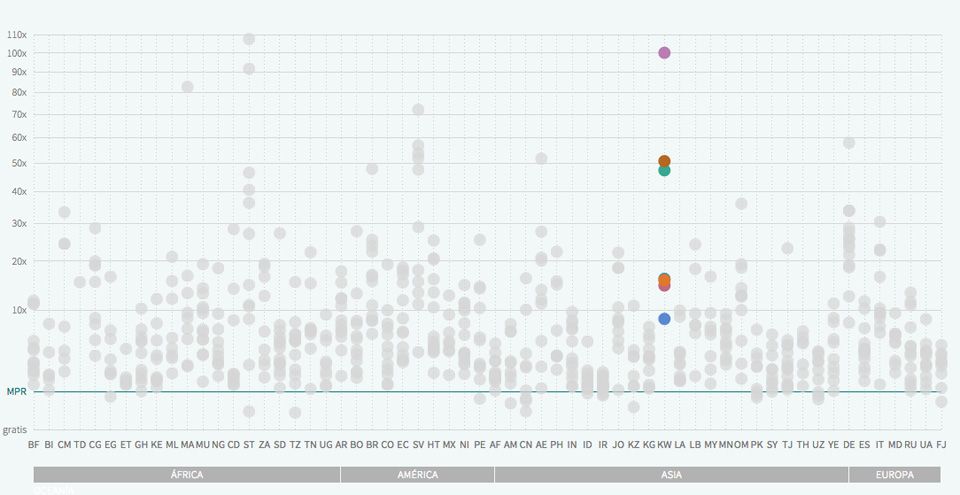
-
These were retail prices, what about prescriptions?
We can also analyse these variables looking at what a patient in a public health system will end up paying, instead of retail prices in pharmacies.
-
The state pays, zero cost
In many of the analysed countries, the cost of some or all of the 14 medicines is borne by the public health system, so the price paid by the patient is zero. Although the problem is sometimes not just the price, but availability: drugs out of stock, far away pharmacies...
-
Comparisons are odious
Specially if we look at ciprofloxacin, an antibiotic, whose retail price at pharmacies is the most variable across the 60 analysed countries. On the public side diclofenac, an anti-inflammatory drug, is the one with the widest range of prices.